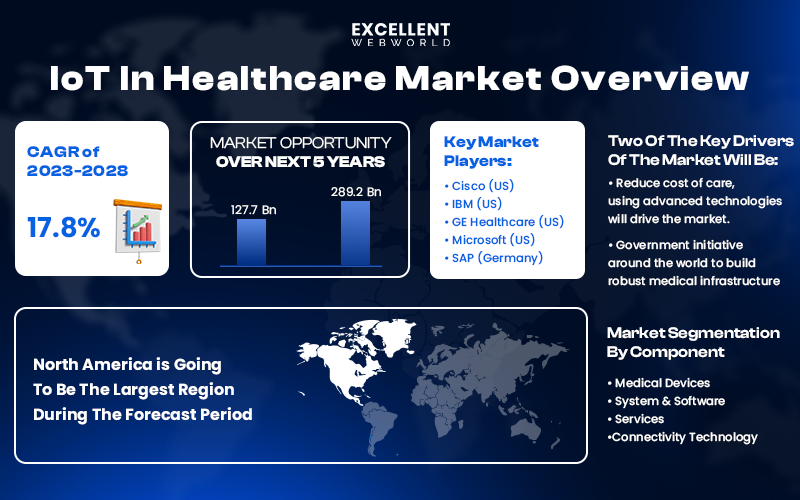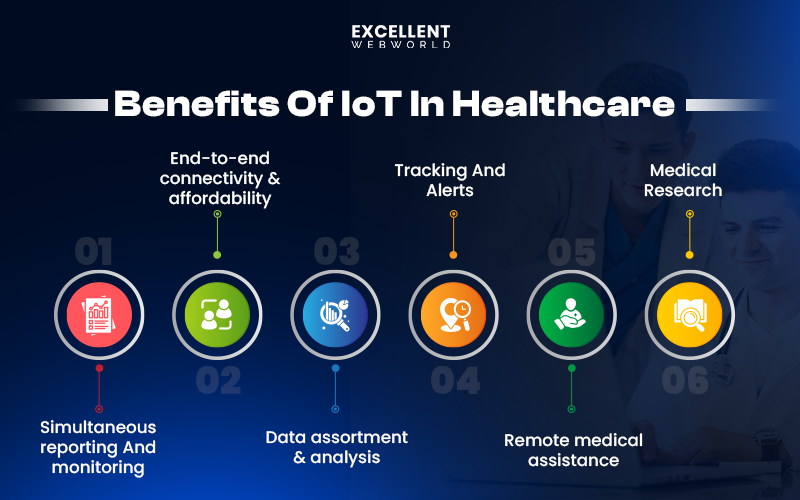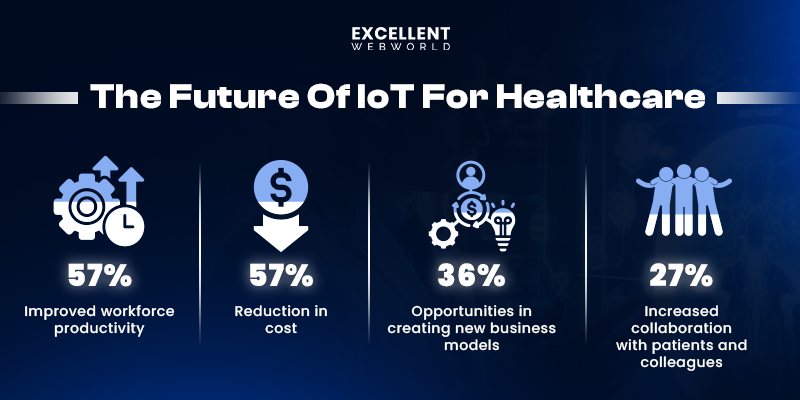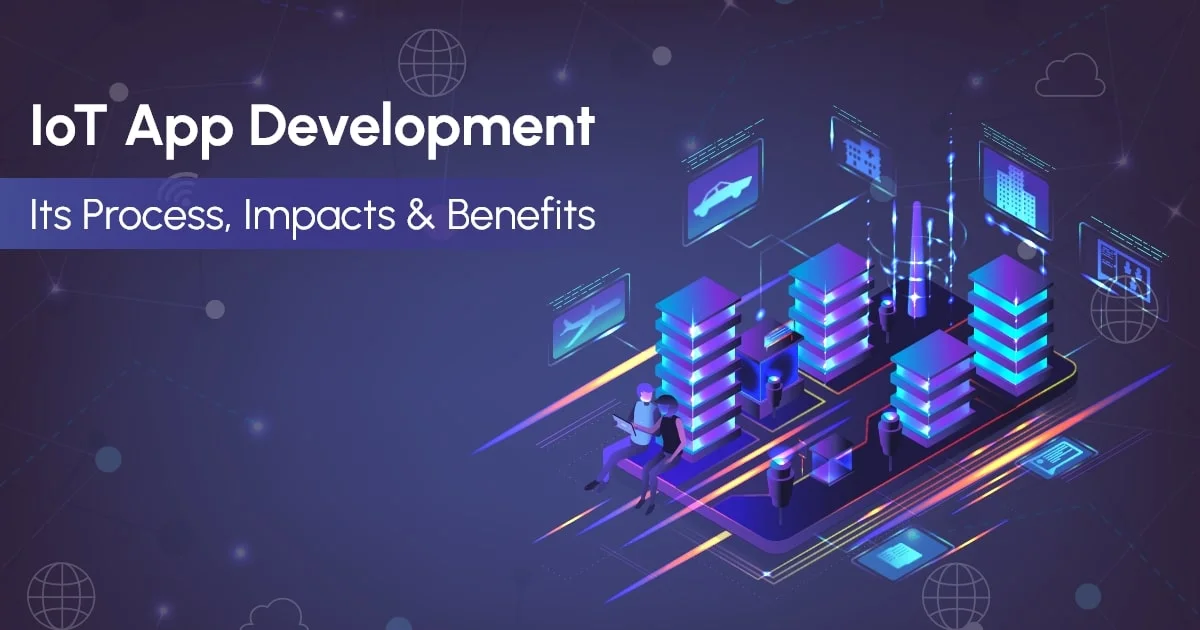IoT in Healthcare is reshaping the way medical professionals deliver care, manage resources, and monitor patients in real time. If you often deal with delayed access to health information, limited monitoring capabilities, or challenges in post-surgical care, then you need healthcare software modernization with IoT to build powerful solutions.
By integrating IoT into healthcare systems, doctors and caregivers can access real-time data, automate routine tasks, and make faster, more informed decisions. From robotic surgeries to continuous vital monitoring, IoT technology is improving both patient outcomes and operational efficiency across the healthcare industry.
Building healthcare applications with IoT capabilities also helps providers visualize essential health data more clearly. This ensures that medical teams can respond quickly and accurately when it matters most.
In this article, we will explore what IoT in Healthcare really means, along with its benefits, real-world applications, key challenges, and future design trends in healthcare that are shaping the next generation of connected care.
Market Overview of IoT in Healthcare

IoT in healthcare industry market is growing rapidly, leading to a revenue surge from USD 53.64 billion in 2024 to 368.06 billion by 2034. The growth rate is impressive, averaging around 21.24% each year.
The market is driven by advanced IoT technology, which enables real-time patient monitoring. Patient outcomes will improve as more hospitals adopt IoT, leading to higher market growth. A key benefit of IoT technologies is effectively collecting and analyzing patient data. Healthcare providers can use this data to provide accurate diagnoses.
Here is a comprehensive overview of IoT, including how it works and why understanding its full impact on healthcare services is essential.
IoT is a network of physical objects embedded with sensors that can exchange data with other devices. The primary goal of integrating IoT into healthcare services is to create self-reporting devices that can communicate with each other in real-time.
Importance of IoT in Healthcare Industry
IoT-based systems collect patient data and provide instant access to healthcare professionals. These devices communicate with each other to ensure timely patient assistance. IoT healthcare devices send the recorded information to the cloud. Doctors can access patient data from cloud resources and provide accurate diagnoses.
It can improve patient care, speed up diagnoses, reduce costs, and increase the efficiency of healthcare operations. The data collected on the cloud can also help healthcare institutions with research. This shows the potential of IoT technologies to boost healthcare workflow and streamline hospital operations.
But how does IoT enable streamlined workflows? Here is a breakdown of the entire process.
How IoT in Healthcare is Transforming the Future of Hospitals
This process shows how IoT development services with healthcare industry enables real-time monitoring. Apart from streamlined workflows, there are several benefits of IoT in healthcare.
What Are The Key Benefits of IoT in Healthcare?
1. Concurrent Reporting and Monitoring
Smart devices can save many lives in medical emergencies through real-time monitoring, like heart, diabetes spikes, or asthma attacks. Smartphone apps gather essential health data through innovative medical devices.
IoMT devices track vital health symptoms like oxygen, weight, ECG, and sugar levels. The data is stored in the cloud and shared with healthcare professionals. This setup allows you to access the data from anywhere at any time.
2. End-to-End Connectivity and Affordability
The integration of IoT in healthcare is transforming patient care by enabling seamless device communication through innovative apps. Using connectivity protocols like Bluetooth, Wi-Fi, and ZigBee, healthcare professionals can monitor patient vitals remotely, which engages in personalized communication—tailored messages and promotions related to treatments.
This technology-driven approach reduces healthcare costs by minimizing unnecessary clinic visits and optimizing resource utilization, leading to a more efficient, proactive, and connected patient experience.
3. Data Collection and Analysis
Managing the large volumes of real-time data generated by healthcare devices can be challenging especially when integrating multiple sources without the support of cloud computing in healthcare, which becomes complex.
Fortunately, IoT devices can efficiently collect and analyze real-time information without storing all the raw data. Instead, this data processing occurs in the cloud, allowing healthcare providers to access graphs and summaries on demand.
These processes enable healthcare organizations to obtain essential analytics and data-driven insights. This speeds up decision-making and reduces the likelihood of errors, ultimately making the healthcare system more efficient.
4. Monitoring and Notifications
Timely alerts are crucial for managing chronic conditions. IoMT devices (Internet of Medical Things) record key health data and send it to doctors for real-time monitoring. They also notify patients about essential health updates through healthcare mobile apps and smart sensors.
These reports provide a clear picture of a patient’s condition, regardless of location or the time of day. This enables healthcare providers to make informed decisions and deliver timely treatments.
5. Remote Healthcare Support
Using a healthcare mobile app in an emergency, patients can quickly connect with a doctor who may be miles away. Medical professionals can also develop custom healthcare apps to assess patients and identify health issues.
Using IoMT devices, you can create systems that deliver medications automatically when refills are needed based on patient prescriptions and health data.
Hospitals can use IoT technology to enhance the quality of treatment and help reduce healthcare costs for patients. This results in better access to timely treatments and reduced financial burden.
6. Medical Research
IoT healthcare applications play a crucial role in medical research. These apps use IoMT devices to collect vast data about patients’ medical conditions. This information is invaluable for statistical studies that support medical research.
Healthcare businesses can integrate IoT technology into various devices, enhancing the quality of patient data.
Top 4 Challenges Faced By IoT in Healthcare
IoT in healthcare faces challenges related to data security and privacy, integration of protocols, data overload, and high implementation cost. These challenges require careful consideration to ensure the safe and effective implementation of IoT solutions in healthcare settings.
1. Data Security
Data security and privacy are significant challenges in the healthcare industry, especially when IoT devices are used. These devices collect and transmit data in real-time but often need more adequate security measures. As a result, the data becomes vulnerable, making it easier for hackers to execute cyberattacks.
Plus, the ownership data generated by these electronic devices needs to be properly defined. This ambiguity adds another layer of risk, as it can lead to unauthorized access to sensitive patient information. Cybercriminals can exploit this data for fraudulent activities, such as creating fake identities or filing false insurance claims.
2. Integration of Protocols
The integration of data from multiple devices in healthcare IoT systems presents significant challenges. One major issue is that device manufacturers must agree on standard communication protocols. This lack of consensus complicates connectivity between different IoMT devices, making it challenging to gather and utilize data effectively.
Communication between these devices slows the healthcare ecosystem due to non-standardized protocols, limiting the potential for expanding IoT in healthcare. With standardized protocols, integrating IoT devices becomes an efficient task.
3. Data Overload
The non-standardized integration of protocols slows down data collection from IoMT devices. However, these devices still gather a significant amount of data. As a result, doctors often experience data overload. This overload can reduce decision-making efficiency, potentially leading to incorrect diagnoses.
Although the likelihood is low, there are instances when IoT device sensors provide inaccurate readings, which can mismatch a patient’s information. This issue becomes intense as more devices connect without a standardized protocol.
4. High Implementation Cost
The cost of implementing IoT in healthcare depends mainly on the complexity of the project and the specific needs.
Here are some examples of IoT costs in healthcare:
| Complexity | Cost |
|---|---|
| MVP version of IoT app | USD 40,000+ |
| Healthcare software platforms with monitoring equipment | USD 15,000 – 25,000+ |
| IoT app development, maintenance, and support | USD 20,000 – 1,000,000+ |
| IoT proof of concept (PoC) | USD 5,000 – 20,000+ |
| Custom ECG tracker | USD 300,000+ |
IoT in healthcare presents many challenges, including problems with technical and standard protocol implementation, high costs, and the need for more experts to manage the devices. However, according to a report, healthcare IoT will save the industry USD 300 billion in the coming years.
IoT in Healthcare: Key Use Cases & Examples
Using IoT in healthcare services helps save time and enhance patient experiences. This is why companies like Google and Apple invest heavily in IoT technology.
Here are the top ways in which you can use IoT in healthcare with key examples,
6 Key Use Cases of IoT in Healthcare
1. Remote Patient Monitoring
IoT devices allow monitoring from a distance. The complete process of monitoring is very time-saving and cost-effective. It will be done with the help of wearable or smart devices.
2. Smart Medical Devices
Connected IoMT devices, like smart pill bottles, remind patients to take their medications, ensuring they follow their treatment plans.
3. Glucose Monitoring
It’s not easy to check glucose levels and manually record results. However, this process is not negligible, as more than 30 million Americans have diabetes.
IoT devices help by providing continuous, automatic monitoring of glucose levels. These devices can alert patients when glucose levels are problematic.
4. Enhanced Data Collection
IoT technology collects large amounts of health data. This information helps healthcare professionals make patient care decisions, leading to more personalized treatment.
5. Depression And Mood Monitoring
It’s been challenging to track mood and symptoms of depression continuously. Most of the time, patients can’t describe the feeling because of sudden mood swings, and reports are not that accurate.
Mood-aware IoMT devices can solve this problem by tracking blood pressure and heart activity. Additionally, the accuracy level is very high in getting symptoms of depression.
6. Identification of Chronic Disease
The IoT can use this information to identify a patient’s chronic illness. The patient must fill in the symptoms on the device, and the IoMT device gives results according to the available data.
4 Examples of Existing IoT Solutions
1. Wearable Health Monitors
Wearable devices that track health metrics like Fitbends and Smart Watches. This enables proactive health management.
2. Smart Inhalers
These IoMT inhaler devices come with reminders and trackers for patients with asthma and COPD. Patients manage their conditions by taking their medication and tracking usage.
3. IoT Enable Smart Beds For Hospitals
Integrating IoT features directly into patients’ beds can enhance the efficiency of medical facilities.
Various IoMT devices and network-connected sensors create smart beds that prioritize patient comfort and track patients’ vital signs 24/7.
4. Electronic Medical Records (EMR) / Electronic Health Records (EHR)
The integration of a patient’s health data with digital health records (EMR/EHR) offers significant benefits of EHR, such as seamless access via web and mHealth app services. This integration helps healthcare professionals exchange patient information effortlessly.
IoT use cases in healthcare are growing and promising the industry’s future. While the number of use cases and innovations shaping IoT in healthcare is endless, here are some key trends.
What is the future of IoT in healthcare?
Here are some technologies that will shape the future of IoT in healthcare industry.
1. AI Integration IoT Healthcare System
Integrating AI in healthcare industry has increased rapidly, and AI-integrated IoMT devices has led to drug discovery, precision medicine, and AI-enabled robotics innovations. Automating key processing and analysis tasks has also reduced costs.
Some of the advantages of AI integration in IoMT
In summary, blending AI development services into IoMT drives innovation, optimizes operational efficiency, and enhances patient outcomes.
2. Healthcare Data Analytics
Data collected by IoT devices show exponential growth, and healthcare organizations need advanced data analytics to get actionable insights. That is why you see increased demand for real-time analytics platforms in the healthcare industry.
Some of the key trends in healthcare data analytics are,
3. 6G’s Impact on Healthcare IoT
Remote patient monitoring will grow with 6G technologies. High-speed networks help to communicate with healthcare providers. Here are some of the benefits of 6G one can expect in IoT Healthcare.
Wi-Fi 6 and 6G will be new IoT trends. IoT benefits healthcare providers and patients alike. It speeds up the diagnosis process and offers actionable patient health insights. Many medical practitioners want to integrate IoT-based systems through healthcare app development.
However, these medical practitioners and hospital chains face technical challenges while developing custom healthcare apps. This is where an expert healthcare app development company can help.
How can Excellent Webworld help you with IoT in Healthcare?
The above article must have been useful in understanding how you can use IoT in healthcare. However, the complexities of implementing IoT systems still exist. We can help you overcome implementation challenges by simplifying the integration of the Internet of Things in healthcare services.
We have over 13 years of experience delivering healthcare app development services for clinicians, medical practitioners, and hospital chains. Our team of experts has successfully delivered high-performance healthcare apps integrating advanced IoT technologies. With more than 900 successful projects, our experts have been catering to different client needs in the healthcare industry.
We are a leading healthcare app development company that offers end-to-end IoT development and integration for medical practices. Contact us now to consult our IoT experts and create custom healthcare platforms for your practice.
FAQ
It allows healthcare professionals to connect actively with patients without inconvenience. Effective decision-making by doctors will lead to timely patient care.
Smart technology combines devices, the internet, healthcare data, and AI. This helps track patients’ health conditions, remind them of medications, and alert them in case of emergency.
There are many applications of IoT in healthcare. For Example
Here is the list of IoT devices in healthcare

Article By
Paresh Sagar is the CEO of Excellent Webworld. He firmly believes in using technology to solve challenges. His dedication and attention to detail make him an expert in helping startups in different industries digitalize their businesses globally.





